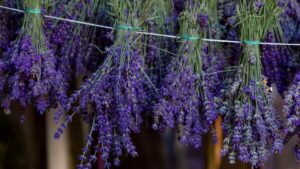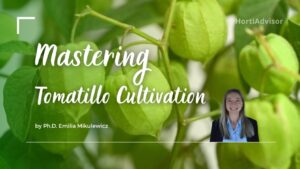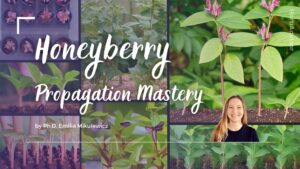How to Plant, Grow and Care for Mint?
Discover the secrets to successfully planting, growing, and caring for mint in your garden. Learn about mint varieties, propagation methods, and how to troubleshoot common problems.
 Planting, Pruning & Watering
Planting, Pruning & Watering Introduction
About Mint Plant
Mint (Mentha) is a popular, aromatic herb belonging to the Lamiaceae family. With over 15-20 known species and countless hybrids, mint varieties are widely used in culinary, medicinal, and ornamental applications. Known for its refreshing and invigorating aroma, mint is a versatile plant that's easy to grow and care for in a range of environments.
Benefits of Growing Mint
Growing mint in your garden offers several benefits, including:
- Easy-to-grow and low maintenance
- Highly aromatic and flavorful, ideal for culinary use
- Medicinal properties such as aiding digestion and soothing headaches
- Attracts pollinators like bees and butterflies to the garden
- Acts as a natural pest repellent
Mint's Importance in Horticulture
Mint has a long history in horticulture due to its versatility and usefulness. From ornamental gardens to herbal remedies, mint plants have played a significant role in shaping human culture and garden design. As a hardy perennial, mint is a staple in herb gardens and a favorite among novice and experienced gardeners alike.
Common Misconceptions About Mint
Despite its popularity, there are a few misconceptions about mint, such as:
- All mint varieties taste the same: Mint species and hybrids can have significantly different flavors and aromas.
- Mint is invasive and difficult to control: While mint can be vigorous, proper planting and maintenance can keep it well-contained.
- Mint requires a lot of water: Mint can tolerate a range of moisture levels and can even withstand drought conditions when established.
Overview of this Mint Guide
This comprehensive guide will cover everything you need to know about planting, growing, and caring for mint. From background information on mint varieties to planting and propagation techniques, maintenance, harvesting, and troubleshooting common issues, our aim is to provide an engaging and informative resource for mint enthusiasts and gardeners.
Mint: Background Information
Scientific Classification and Name of Mint
Mint belongs to the Mentha genus within the Lamiaceae family. The genus includes over 15-20 recognized species and numerous hybrids and cultivars, each with its distinct characteristics and flavor profiles.
Origin and Distribution of Mint
Mint is native to Europe, Asia, Africa, and Australia, but has been naturalized worldwide due to its popularity and adaptability. From wild varieties growing in damp meadows and along riverbanks to cultivated plants in gardens and containers, mint has a broad distribution and can thrive in diverse climates and environments.
Characteristics of Mint
Size
Mint plants typically grow to a height of 1-3 feet (30-90 cm), depending on the species and growing conditions. Some varieties may spread rapidly through underground runners, forming dense mats or clumps in the garden.
Foliage
Mint has simple, opposite leaves that are usually lanceolate or ovate in shape. The leaves can vary in size, texture, and color, ranging from bright green to purple, and often have a slightly fuzzy or serrated appearance.
Flowers, Fruits, or Seeds
Mint plants produce small, tubular flowers that typically appear in clusters or whorls. Flower colors can vary from white and pink to purple or blue. Mint plants rarely produce fruits or seeds, as most varieties propagate primarily through vegetative means.
Growth Habits
Mint is a fast-growing, perennial herb that prefers moist, well-drained soil and partial to full sunlight. The plants are known for their vigorous growth and can spread quickly through underground runners, making them potentially invasive if not managed properly.
Quick Facts About Mint Characteristics
| Common name | Mint |
|---|---|
| Botanical name | Mentha |
| Family | Lamiaceae |
| Type | Perennial herb |
| Native area | Europe, Asia, Africa, North America |
| Hardiness zone | 3 - 9 (-40°C to -1°C / -40°F to 30°F) |
| Height | 10 cm - 120 cm (4" - 48") |
| Spread | 60 cm - 90 cm (24" - 36") |
| Spacing | 45 cm - 60 cm (18" - 24") |
| Light preference | Full sun to part shade |
| Water preference | Moderate to high |
| Maintenance | Low to moderate |
| Soil type | Rich, loamy, well-drained |
| Soil pH | Neutral to slightly acidic (pH 6.0 - 7.0) |
| Soil drainage | Well-drained |
| Garden uses | Containers, herb gardens, ground cover, culinary uses |
| Garden styles | Cottage, Mediterranean, contemporary, formal |
| Companion plants | Cabbage (Brassica oleracea), Tomato (Solanum lycopersicum), Peas (Pisum sativum), Beans (Phaseolus vulgaris) |
Popular Varieties and Cultivars of Mint Plant
Some well-known mint species and cultivars include:
- Peppermint (Mentha x piperita)
- Spearmint (Mentha spicata)
- Apple mint (Mentha suaveolens)
- Chocolate mint (Mentha x piperita 'Chocolate')
- Pineapple mint (Mentha suaveolens 'Variegata')
History and Cultural Significance of Mint
Mint has a rich history dating back thousands of years, with records of its use in ancient Egyptian, Greek, and Roman civilizations. Valued for its medicinal and culinary properties, mint has been a staple in traditional remedies and recipes. Its refreshing flavor and aroma have made it a popular ingredient in teas, beverages, sweets, and savory dishes across various cultures.
In addition to its culinary uses, mint has also played a significant role in mythology and folklore. In ancient Greece, mint was associated with the nymph Menthe, who was transformed into the plant by the jealous queen Persephone. The plant's refreshing scent has also been used for centuries in rituals and ceremonies to symbolize hospitality, purification, and renewal.
Planting and Propagation of Mint Plant
Sourcing and Selecting Healthy Mint Plants or Seeds
When starting your mint garden, choose healthy plants or seeds from reputable nurseries or garden centers. Look for plants with robust growth, vibrant green leaves, and no signs of pests or diseases. If you prefer to start from seeds, opt for high-quality, certified seeds to ensure successful germination and healthy growth.
Choosing the Right Location for Mint: Factors to Consider
Sunlight Requirements
Mint thrives in partial to full sunlight. Ideally, provide your mint plants with at least 4-6 hours of direct sunlight per day. However, they can tolerate some shade, especially in hotter climates where intense sun can scorch the leaves.
Soil Preferences
Mint prefers well-drained, moist, and fertile soil with a pH between 6.0 and 7.0. To improve soil structure and fertility, incorporate organic matter such as compost or well-rotted manure before planting.
Drainage and Water Requirements
Ensure the planting area has good drainage to prevent waterlogged roots, which can lead to root rot. Mint plants require consistent moisture, so water regularly to maintain evenly moist soil, particularly during dry spells.
Space Requirements and Layout
Mint can be invasive, so give it adequate space to grow, or consider planting it in containers or designated garden beds to prevent it from overtaking neighboring plants. Space mint plants approximately 18-24 inches (45-60 cm) apart to allow for proper air circulation and growth.
Planting Season and Timing for Mint
The best time to plant mint is in the spring or fall when temperatures are moderate. In regions with mild winters, planting in early autumn allows mint to establish strong roots before the growing season begins.
Propagation Methods for Mint
Seeds
Starting mint from seeds can be challenging, as germination rates can be inconsistent. Sow seeds indoors 8-10 weeks before the last frost, or directly outdoors once the soil has warmed up. Cover the seeds lightly with soil and keep them moist until germination.
Cuttings
Propagating mint from cuttings is a more reliable method. Snip a 4-6 inch (10-15 cm) cutting from a healthy mint plant, remove the lower leaves, and place the cutting in a glass of water. Roots should develop within 1-2 weeks. Once roots appear, transplant the cutting into a pot or the garden.
Division
Divide established mint plants every 2-3 years to maintain their vigor and prevent overcrowding. Gently separate the root ball into smaller sections, ensuring that each division has a healthy root system and a few stems. Replant the divisions in the garden or in containers.
Preparing the Planting Site for Mint
Soil Preparation
Before planting, prepare the soil by tilling it to a depth of 8-12 inches (20-30 cm) and incorporating organic matter such as compost or well-rotted manure to improve fertility and drainage. If needed, adjust the soil pH to the preferred range of 6.0-7.0 by adding lime (to raise pH) or sulfur (to lower pH).
Spacing and Planting Depth
Plant mint seedlings or divisions at the same depth they were growing in their previous container. Space plants approximately 18-24 inches (45-60 cm) apart to provide ample room for growth and air circulation.
Watering and Initial Care
Water mint plants thoroughly after planting and maintain consistent soil moisture during the establishment phase. Apply a layer of organic mulch, such as wood chips or straw, around the plants to help retain moisture and suppress weeds.
Container or Pot Selection for Mint
When growing mint in containers, choose pots with a minimum diameter of 12 inches (30 cm) and drainage holes to prevent waterlogged roots. Fill the pot with a high-quality potting mix that is well-draining and rich in organic matter. Containers are an excellent option for controlling mint's invasive growth and allowing for easier relocation as needed.
Growth and Maintenance of Mint Plant
Watering and Irrigation for Mint
Mint prefers consistently moist soil but should never be waterlogged. Water plants deeply when the top inch (2.5 cm) of soil feels dry to the touch. Adjust your watering schedule based on weather conditions, and remember that container-grown mint will typically require more frequent watering than garden plants.
Fertilization and Soil Amendments for Mint
Feed mint plants with a balanced, slow-release fertilizer or organic compost at the beginning of the growing season. Avoid over-fertilization, as this can lead to excessive growth and a reduction in the essential oils that provide mint's signature flavor.
Pruning and Shaping Mint
Regularly pinch back mint's growing tips to promote bushy growth and prevent the plant from becoming leggy. Prune back flower buds as they appear to encourage more foliage growth and prevent self-seeding. At the end of the growing season, cut mint plants back to the ground to encourage fresh growth in the spring.
Mulching and Weed Control for Mint
Apply a 2-3 inch (5-7.5 cm) layer of organic mulch around mint plants to conserve soil moisture, suppress weeds, and regulate soil temperature. Keep the mulch several inches away from the plant's base to prevent rot and fungal issues.
Companion Planting and Intercropping with Mint
Mint makes a good companion plant for many vegetables and herbs, such as tomatoes, peppers, and basil. Its strong scent can help repel pests, such as aphids, cabbage moths, and flea beetles. However, it can be invasive, so it is essential to control its spread when planting mint near other crops.
Pest and Disease Control for Mint
Common Pests
Mint is relatively pest-resistant, but aphids, spider mites, and whiteflies can occasionally be a problem. Inspect plants regularly for signs of infestation and treat with insecticidal soap or neem oil as needed.
Common Diseases
Mint can be susceptible to fungal diseases, such as powdery mildew and rust. To minimize disease risk, maintain proper spacing between plants, ensure adequate air circulation, and avoid overhead watering.
Integrated Pest Management Strategies
Implement integrated pest management practices, such as crop rotation, planting disease-resistant varieties, and using biological controls (e.g., ladybugs or lacewings) to help manage pest and disease issues in your mint garden.
Seasonal Care and Considerations for Mint
Handling Heat and Drought Stress
Mint can tolerate some heat, but excessive heat or drought can cause plants to wilt or become stressed. During hot or dry periods, ensure plants receive adequate water and consider providing shade to protect them from intense sunlight.
Preparing for Blooming or Fruiting Seasons
Since mint is primarily grown for its leaves, it's essential to keep the plant from flowering to maintain the best flavor. Regularly pinch back flower buds to encourage more leaf growth and avoid self-seeding.
Monitoring Mint's Health and Growth
Regularly check your mint plants for signs of pests, diseases, or nutrient deficiencies. Address any issues promptly to ensure healthy, vigorous growth. Additionally, monitor the plants' growth habit to prevent mint from becoming invasive or overcrowded.
Harvesting, Storing, and Using Mint
When and How to Harvest Mint
Begin harvesting mint leaves when the plant is well-established and has several sets of true leaves. Pick leaves in the morning, after the dew has evaporated, for the best flavor. Harvest mint by pinching off individual leaves or small sprigs. Regularly harvest mint throughout the growing season to encourage bushy growth and new leaf production.
Preserving and Storing Mint
There are several ways to preserve and store mint for later use. You can dry the mint leaves by hanging small bundles upside-down in a well-ventilated area, away from direct sunlight. Alternatively, you can freeze mint leaves in an airtight container or submerged in ice cubes for later use in drinks or cooking. Fresh mint can be stored in the refrigerator for up to a week, wrapped in a damp paper towel and placed in a plastic bag.
Culinary and Medicinal Uses of Mint
Mint is a versatile herb with a wide range of culinary and medicinal uses. It can be used fresh or dried in both sweet and savory dishes, such as salads, sauces, desserts, and beverages. Mint is also a popular ingredient in herbal teas, which are believed to aid digestion and provide relief from minor ailments such as headaches and upset stomachs. In addition, mint essential oil is used in aromatherapy for its invigorating and calming properties.
Other Uses for Mint
Beyond its culinary and medicinal applications, mint can be used as a natural pest repellent in the garden, as its strong scent can deter pests such as rodents and insects. Mint is also a popular ingredient in personal care products, such as toothpaste, mouthwash, and cosmetics, for its refreshing and soothing properties.
Creating a Mint-themed Garden or Landscape
Consider creating a mint-themed garden or landscape by combining various mint varieties with other complementary plants. You can use mint as a ground cover or as a border for flower beds or walkways. Pair mint with other aromatic herbs, colorful flowers, and interesting foliage to create an attractive and functional space that also serves as a source of fresh mint for your home.
Conservation and Sustainability Considerations for Mint
When growing mint, it's important to consider conservation and sustainability practices. Choose organic or non-GMO seeds, practice water conservation by using drip irrigation or mulching to reduce evaporation, and use organic pest control methods to minimize the impact on the environment and surrounding ecosystems.
Troubleshooting and Common Problems with Mint
Addressing Nutrient Deficiencies in Mint
Nutrient deficiencies can cause various issues in mint plants, such as yellowing leaves or stunted growth. Regularly test your soil and amend it with organic matter or appropriate fertilizers to ensure your mint plants receive the nutrients they need for healthy growth.
Managing Environmental Stressors for Mint
Mint plants can be affected by environmental stressors such as extreme temperatures or drought. To mitigate these effects, provide adequate water, mulch the soil to regulate temperature and moisture, and consider providing shade during the hottest part of the day.
Diagnosing and Treating Common Physiological Disorders
Common physiological disorders affecting mint include root rot, powdery mildew, and rust. Proper watering practices, good air circulation, and regular monitoring can help prevent and treat these issues. If problems persist, consider using organic fungicides or other environmentally friendly treatment options.
Solutions to Common Issues with Mint
Implementing good cultural practices, such as proper spacing, pruning, and watering, can help prevent many common issues with mint. Encourage natural predators, such as ladybugs and lacewings, to help control pests. Rotate your mint plants with other crops to reduce the buildup of pests and diseases in the soil.
Summary: Mint Key Takeaways
Key Points for Successfully Planting, Growing, and Caring for Mint
Understanding the specific needs of mint plants, such as sunlight, soil preferences, and proper watering, will ensure successful growth. Regular pruning and harvesting, as well as companion planting, can improve the overall health and productivity of your mint plants.
Common Mistakes to Avoid when Growing Mint
Avoid overwatering, planting in poorly draining soil, and neglecting to prune or harvest regularly. These mistakes can lead to various issues such as root rot, diseases, and leggy growth.
Encouragement for Cultivating Mint
With its diverse uses and relatively low maintenance requirements, mint is an excellent addition to any home garden. By following the tips and recommendations in this guide, you can enjoy a thriving mint garden and reap the benefits of this versatile herb.










